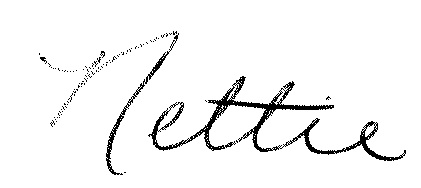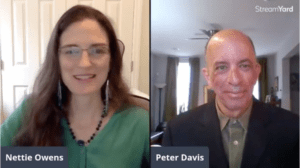How do you onboard correctly in today’s virtual world?
The answer I give to everybody – carefully, intelligently, nicely, and with confidence.
There are three elements to a really well-rounded onboarding program. You’ve got the organizational onboarding – making sure they have the paperwork. You have the technical onboarding – making sure that they have the laptop and the hard things that they need to have. And then there’s the social onboarding that goes along with it. If you hit all three of those points and offer a 360-degree view of the company, from the culture to the systems and the structure – you have a really good one.
What people don’t seem to do is share the relevant information before the new hire. This would be things like all the paperwork, your tax information, your social security information, where things are going to be set up, the paperwork to fill out, whatever kind of documents that you need – because every company is different. All of the paperwork needs to get filled out at least a week before, so you don’t have those hang up such as:
- They don’t have your information to get you registered.
- They can’t assign you a laptop.
- They can’t assign you to a team meeting because they’re missing something.
Then you have to wait. You started on Monday, but really you’re not ready until Thursday. You can get it all done prior to Monday, so you actually can start. Although the secret I’ll share is to never start a job on a Monday – start on a Wednesday. It’s a shorter week that goes faster. It’s so much nicer.
To make new hires feel like part of the team, I like the buddy system. You get somebody who knows the company and knows the people, and the people know that buddy as well. So, if I’m starting at a new company, I can get introduced in small intervals on a Teams meeting or in Zoom if you have to, and the buddy can say, “Hey, Nettie, this is Jennifer, this is what she does, and she’s in this department. She reports to this person, and this is a bit about her.” That way, when I start seeing Nettie in Zoom meetings, I will recognize that person, and that person knows who I am now, too. And if your company’s over 200, you don’t do it. But if you know they’re going to be interfacing with the top 20, then do it. Also, I can come to you and say, “Nettie, I forgot what Bob does. What does Bob do? Can you help me out here?” And it’s a little more security. You will go in with a little bit more confidence into these meetings if you have somebody that you can relate to. Keep in mind that it’s not always HR – because HR doesn’t know what you really do. HR does everything else except your job.
I share this with the companies that hire me. My clients do that because I actually initiate that with them, and I share that information with them. And they appreciate it because they never thought about it before. Then, when I check in with the hires, they tell me that it went really well. I’ve had employers send them flowers for the first day – so they have flowers on their desk. Putting something on their desk that’s meaningful makes a good impression and is welcoming. And I’m not talking about all of the stuff from the company – all the swag. But something meaningful – something that shows this is what you would have if you were not working from home. This is what your office would look like. And we want to welcome you. And when you look at flowers, all you do is smile, and you smell them, and it makes you feel good. Or it could be a jar of M&Ms – who doesn’t like an M&M? So, there are other things that you can do.
But having that buddy system really does work out to everybody’s advantage, and it makes them feel welcome.
How do you know which way to hire – Full Time Employee, 1099, consultant?
This is a whole other discussion. But there are four different types of hires: your contractor, your 1099, your temporary, and your direct.
Companies have to know what’s best for the position and for the role. If it’s just project-based – it’s a contractor. If it’s somebody out ill or if somebody is out on maternity, or has a broken leg, then it’s probably a temporary. But temporary can lead to full time as well. The old adage “Try before you buy” is a smart idea. And it’s not just for employers – it’s also for applicants. It gives them that opportunity to try the company out before they say yes or no. And employers never think about that. It’s always both sides.
Employees and applicants can do a temporary-to-hire model with what’s called the 90-day guarantee. Within 90 days, we have a chance to try you out; you have a chance to try us out. Within that 90 days, providing there are set realistic expectations, if you don’t like us, you can say goodbye. If we don’t like you, it’s the same thing. You can definitely do that. Most employers actually have that within a certain time period, you will be reviewed. And if you’re not, then it’s called a direct hire. But even direct hires can have that stipulation in there.
Do hiring managers know why you are hiring, and if yes, do you have all the answers applicants will ask you?
To be honest with you, there are unfortunately too many hiring managers who don’t have the answers – and it all starts with the job description. Who wrote it? How old is it? Has it been tweaked for 2021? And for virtual and for remote? And if you don’t have that answer right then and there, how can you hire? If you don’t know how to sell your culture, your team culture, who you are as a manager, then you don’t know how to hire. Do you know how to look for body language and tone when you hire? Because if you don’t look for those things and ask those questions, then they could be answering questions perfectly but in a robotic manner – and that’s not who they are. So, if employers don’t know the answers to all the questions that they expect applicants to have the answers to – then it’s a bad hire.
What are you seeing that’s different out there in the hiring and recruiting world that employers should be paying attention to?
Attitude is the number one thing. You’ve had a whole year to figure this out. What makes you stand out? And employers are trying to figure that out – and they’re getting there. They’re figuring out we can actually do this remotely, or we can’t actually do this remotely. So, there’s an ease and an attitude now, after doing this whole pandemic thing for a year – that is nicer. I get to see that doors are opening up now. People are bringing other individuals in remotely, as well as non-remotely. So, the answer to that is the attitude that you see with people and, hopefully, it’s a better positive attitude.
3 Action Steps
- Take care of as much of the paperwork/information gathering before a new hire’s start day.
- Establish a buddy system for new hires so they feel welcomed and can get to know people.
- Consider doing a temporary-to-hire situation for 90 days so both the employer and employee can decide if it’s a good fit for everyone.
Connect with Jennifer Mastor at: www.linkedIn/com/jennifer-mastor or www.mastorrecruiting.com
Please comment below, I would love to hear from you.















No comments yet.